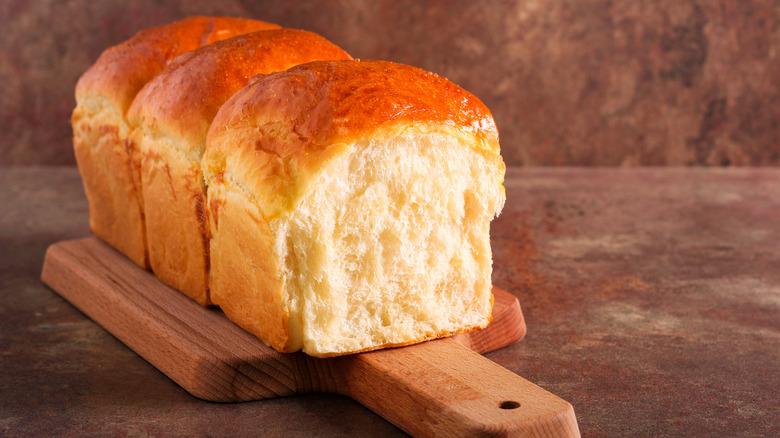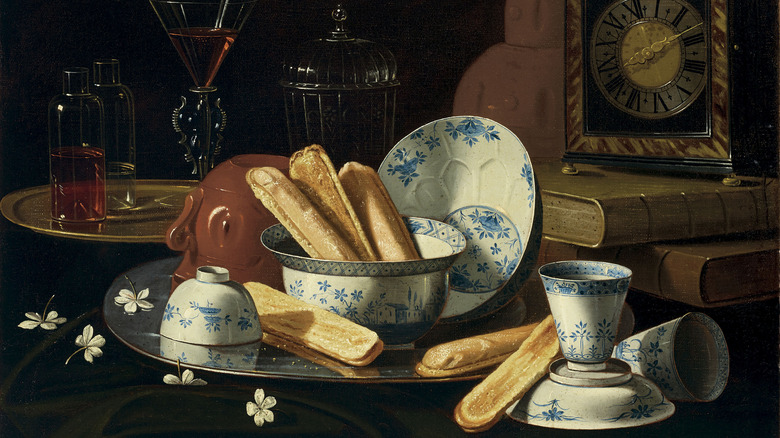Why White Bread Was Once A Status Symbol
Today, sandwich experts swear by sprouted sourdough and pumpernickel without much consideration for the standard white bread. The growth of nutritional science has made this so, and now anything white or processed is seen as lower-quality and insubstantial. Furthermore, Salon notes that Americans began associating sliced white bread with consumerism and cultural homogeneity in the 1960s when the counterculture movement became more prevalent. However, this was not the case for much of European and American history.
William Rubel's "Bread: A Global History" points to paintings and still lifes as evidence of the contrary. White bread was once seen as a sign of opulence and fruitfulness. You could imagine the pale, puffed-up white bread in its rightful place, sitting amidst draping grapes, fine china, and fortified wine. According to Cook's Country, throughout history, a piece of brown soda bread would seem out of place and was seen as a sign of one's poverty. As commonplace as white bread is today, what made it a bygone symbol of wealth?
White bread implied excess
Thanks to modern agricultural technology, wheat production is possible in many different lands and climates. At a certain point during the Industrial Revolution, the need to utilize every part of the wheat grain diminished, making white bread the more popular choice, per the Federation of Bankers. However, according to Rubel, very few farmers had a reliable source of wheat for most of European history. Before the 19th century, the presence of white, enriched bread on a table implied a wealth that was unconcerned with its rarity. To filter out the wheat germ is to get rid of a part of wheat, whereas the lower class couldn't even afford the luxury.
Now we think of white bread as highly-processed "empty calories," but that was only really a concern for the laboring class. It was believed that the aristocracy had no need for nutritional value in their food since they were sedentary. For this class of society, dining was for pleasure and social gatherings, not sustenance. Other breads that are now touted as health foods or artisanal products at the grocery store were staples for the lower class. They had heartier bread made of peas and rye that tasted quite sour and drab. Funnily enough, we now seek out the less-refined foods of the past since they are considered the most rustic. If we tried to step into the shoes of a laborer in the 17th century, perhaps we'd consider plain white bread a soft, yeasted delicacy.

